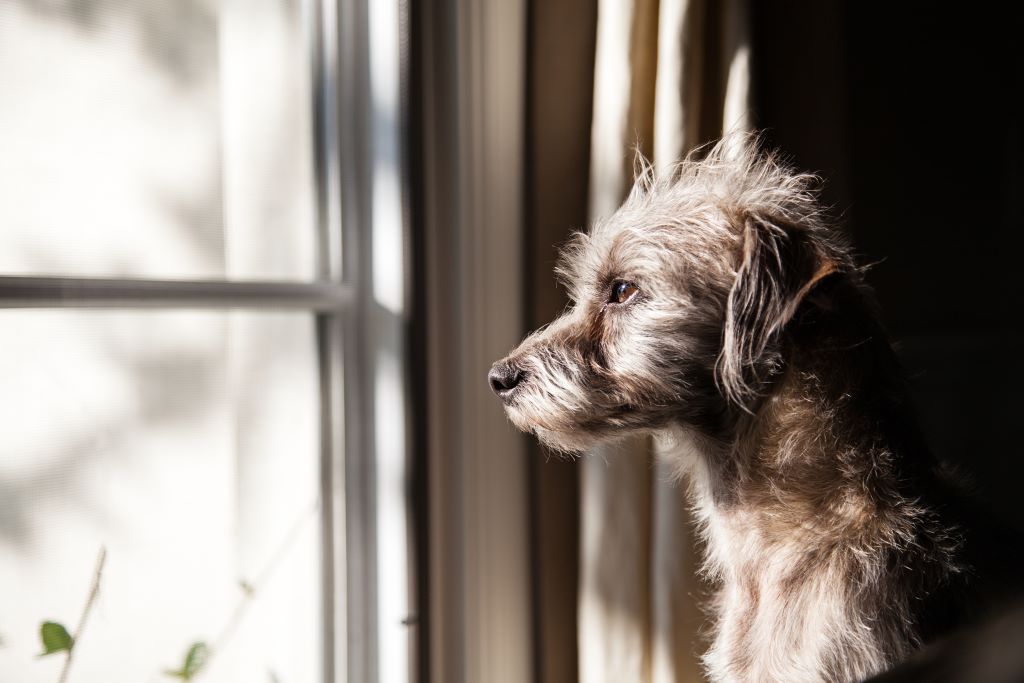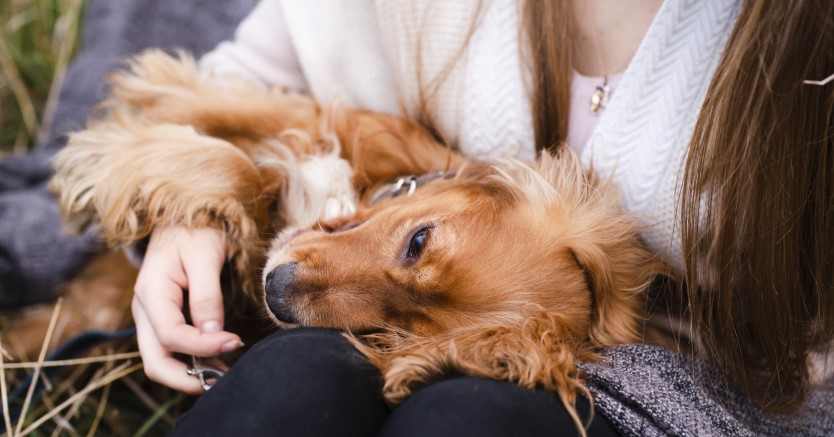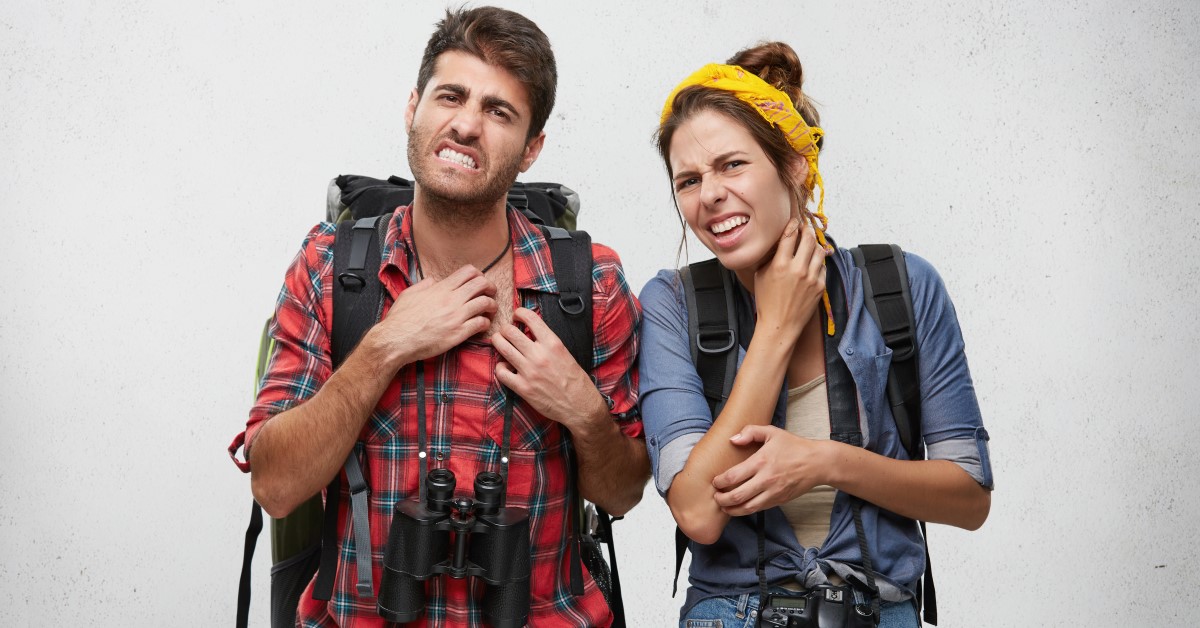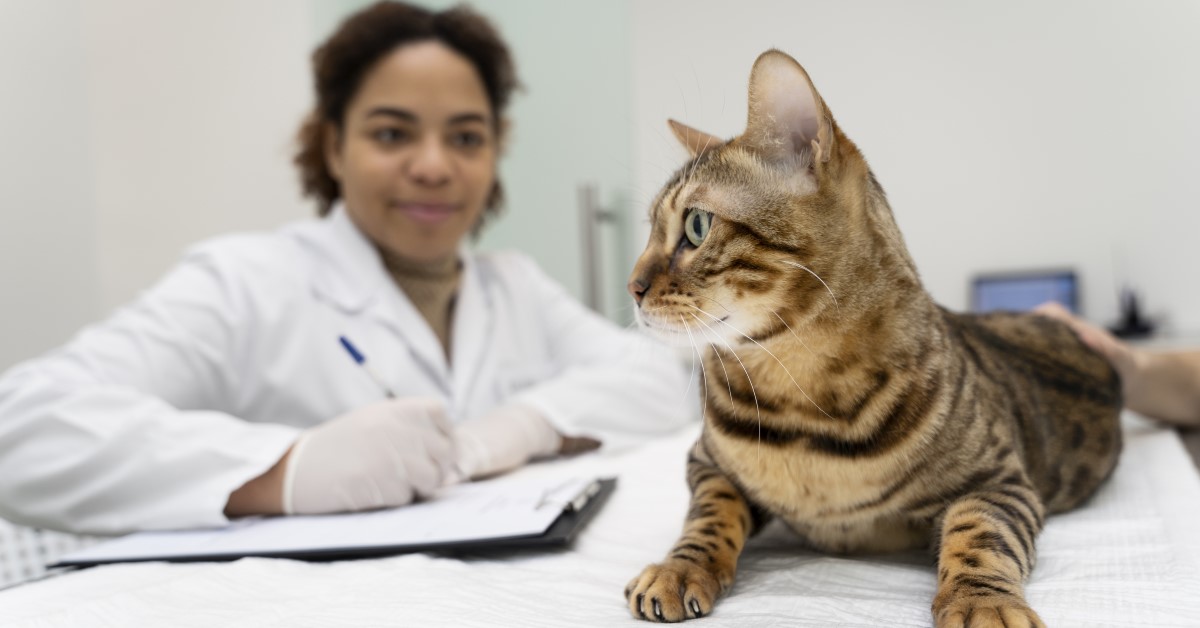Your Dog’s Separation Anxiety Could Peak as You Head Back to Work
Separation anxiety in dogs is a common problem with many practical solutions.

Like millions of other Americans, you may have started spending more time at home after the World Health Organization declared the novel coronavirus a worldwide pandemic in March. Although the arrangement might have been too much togetherness for the rest of your family, your dog was likely thrilled to spend more time with you.
Now that you’re headed back to the office, you could start seeing increased signs of separation anxiety. This behavior, which is common under normal circumstances, can be especially heightened if your dog picks up on human stress. Although the transition back to work can be challenging for both of you, understanding what causes separation anxiety and how to respond to it will help it go smoother.
Symptoms of Separation Anxiety
If your dog has always been confident and playful, it can surprise you to see her suddenly acting timid and fearful. Any pet can suffer from separation anxiety, even those who have previously never shown signs of it. The abrupt change from you being home all the time to suddenly being gone more than 40 hours a week can affect even the most well-behaved dog. Here are some signs of separation anxiety:
- Attempting to follow you out the door when you leave for work each day
- Destructive chewing
- Elimination accidents
- Excessive barking or howling
- Increased incidence of aggressive behavior
- Frantically or nervously pacing around the house
- Turning away from food or eating less than normal
Dog parents sometimes feel helpless and stressed themselves when confronted with behavior caused by separation anxiety. However, it’s critical that you don’t ignore or even reward problem behavior because you feel guilty. Providing your dog with undivided attention and making the environment as stress-free as possible in your absence will both go a long way in helping him overcome separation anxiety.
How to Help Your Dog with Separation Anxiety
Whether your dog will be kenneled or have free reign of the home, the best thing you can do to prevent separation anxiety is to provide a stimulating environment in your absence. Below are some important things you can do.
Ensure Your Dog Has Plenty of Stimulation and Comfort While You’re Gone
The easiest way to do this is to rotate new toys every few days so he frequently has new toys to keep himself entertained. Consider choosing interactive toys that require your dog to solve a problem to get a reward, chew toys to prevent destructive chewing elsewhere in your home, and cuddle toys that provide your dog with comfort among the rotation. You can rotate the toys according to your dog's needs.
Hearing human voices while your dog is home alone can also provide her with great comfort. You might consider turning the radio or television on low to provide constant background noise. The calmer and more soothing the sounds, the more likely it is your dog will relax.
Another thing your dog may find reassuring is to have access to an item like your shirt or pillow because everything you touch contains your unique scent. With a sense of smell that’s at least 10 times that of humans, dogs are highly driven by aromas. When your pet associates your scent with love and comfort, it can help him feel much more comfortable until you reunite at the end of the day. Be sure to give your dog an item you won’t need back since she is likely to chew or lick it.
Create a Ritual When You Leave for Work Each Day
If everyone in your family leaves home each morning, the person who leaves the latest should set aside a few minutes to provide the dog with one-on-one attention. This is still important to do if you’re the only one leaving and everyone else remains at home. The interactions help to distract your dog from any anxiety he may be feeling as well as keep him from watching the door as people depart. Whoever spends time with the dog before saying good-bye should be in a relaxed state of mind to avoid the dog from picking up additional anxiety.
Include Your Dog on Family Outings
Your pet needs to know that he belongs in your family and that no one has forgotten about him. This is especially true during times of transition such as kids going back to school, a new schedule at work, or a recent move. It can go a long way to help her feel less anxious when each family member gives the dog several minutes of undivided attention each day. If possible, bring your dog along on family outings when you can. Riding with the family in the car is sure to be the highlight of your dog’s day after looking forward to the family coming home at the end of a long day away.
Don’t Hesitate to Seek Help from a Veterinarian
Sometimes separation anxiety in dogs doesn’t improve or gets worse with human intervention. If that’s the scenario at your home, be sure to schedule an appointment with your veterinarian to get additional feedback and behavior training tips. Your dog could have an undiagnosed health problem contributing to the anxious behaviors. She might also benefit from medication, but only your veterinarian can make that recommendation or write a prescription.
While dealing with separation anxiety can be frustrating, take it as a sign that your dog truly loves you and values the time you spend together.
Ready to start saving money on pet wellness care?
Then take a look at Mint Wellness, the pet wellness plan that provides fast reimbursement on routine pet care. Save on vaccinations, wellness exams, preventatives, dental, and more!
Learn More


